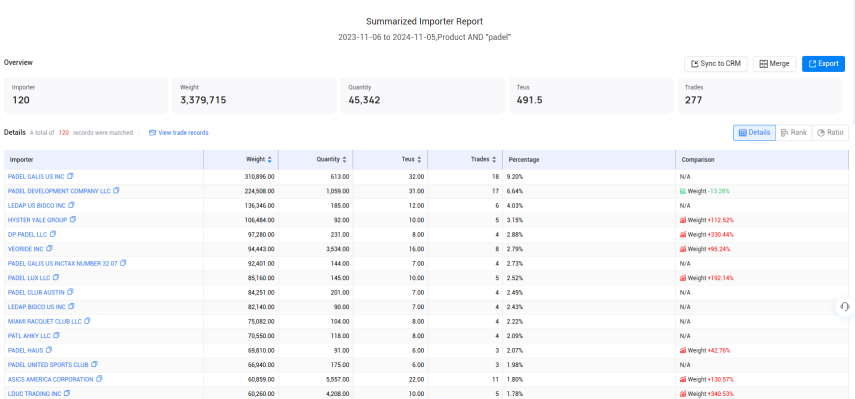 Trade Data Provider
Trade Data Provider
 14-11-2024
14-11-2024
For businesses looking to expand their trade opportunities, understanding U.S. imports data is essential. Whether you're an importer, exporter, or market researcher, access to reliable and comprehensive data on U.S. imports can provide invaluable insights into market trends, demand patterns, and potential suppliers.

>>Click here for imports data<<
Why U.S. Imports Data Important
U.S. imports data serves as a window into the dynamics of the global trade market, offering insights into which products are entering the U.S., their countries of origin, and the volume of trade. Here’s why this data is so important:
1. Market Intelligence: For businesses involved in trade, having access to U.S. imports data helps identify which products are in high demand. This can guide companies in product selection, sourcing decisions, and predicting future trends.
2. Competitive Advantage: Companies can use U.S. imports data to monitor competitors, understand their supply chain patterns, and assess the types of products they are sourcing. This can reveal gaps in the market or areas for innovation.
3. Supplier Identification: U.S. imports data can help you find reliable suppliers from different countries. By analyzing the data, you can identify the major exporters of products you're interested in and initiate partnerships directly with the right suppliers.
Using Tendata to Find U.S. Imports Data
Finding U.S. imports data has traditionally been a time-consuming and complex task, requiring manual research and the aggregation of various data sources. Tendata streamline this process by providing real-time, comprehensive data on imports, exports, and trade transactions. Here's how businesses can use Tendata to access U.S. imports data:
1. Sign Up for Access: First, sign up for a Tendata account. The platform offers different subscription levels, depending on your business needs, allowing you to access data on specific industries, products, or regions.
2. Search by Product or HS Code: Tendata’s interface allows users to search for U.S. imports data by entering product keywords or HS codes. For example, if you're looking for information on imported electronics, you can search using keywords like "smartphones" or use the relevant HS code to narrow down the search.
3. Filter by Country of Origin: Tendata allows you to filter your U.S. imports data by the country of origin, enabling you to see which countries are exporting products to the U.S. and the volume of trade. This is particularly useful for finding suppliers or analyzing trade relations with specific countries.

>>Click here to get a free demo<<
4. Analyze Import Volume and Value: The platform provides detailed data on the volume and value of imports, helping businesses understand the financial scale of trade for different products. You can use this data to identify high-demand items and potential profitable markets.
5. Track Historical and Trend Data: Tendata enables users to access historical U.S. imports data, which helps businesses identify long-term trends, seasonal patterns, and growth opportunities. By examining how imports have changed over time, businesses can make more accurate forecasts for their own operations.
6. Customized Reports: Tendata allows you to generate customized reports based on specific parameters, such as product category, region, and trade value. These reports can be used for in-depth market analysis, competitor benchmarking, and strategic planning.

>>Contact Tendata for a free demo<<
Conclusion
Finding U.S. imports data is crucial for businesses engaged in global trade, as it provides valuable insights into market trends, supplier opportunities, and competitive intelligence. By using Tendata, businesses can streamline their research, access accurate and timely U.S. imports data, and make more informed decisions. Whether you're looking to identify high-demand products, find reliable suppliers, or track trade trends, Tendata offers the tools and resources to help businesses succeed in the competitive world of global trade.

Category
Leave Message for Demo Request or Questions


 T-info
T-info T-discovery
T-discovery

 My
Tendata
My
Tendata Market Analysis
Market Analysis Customer
Development
Customer
Development Competitor
Monitoring
Competitor
Monitoring Customer Relationship
Customer Relationship





































































































































